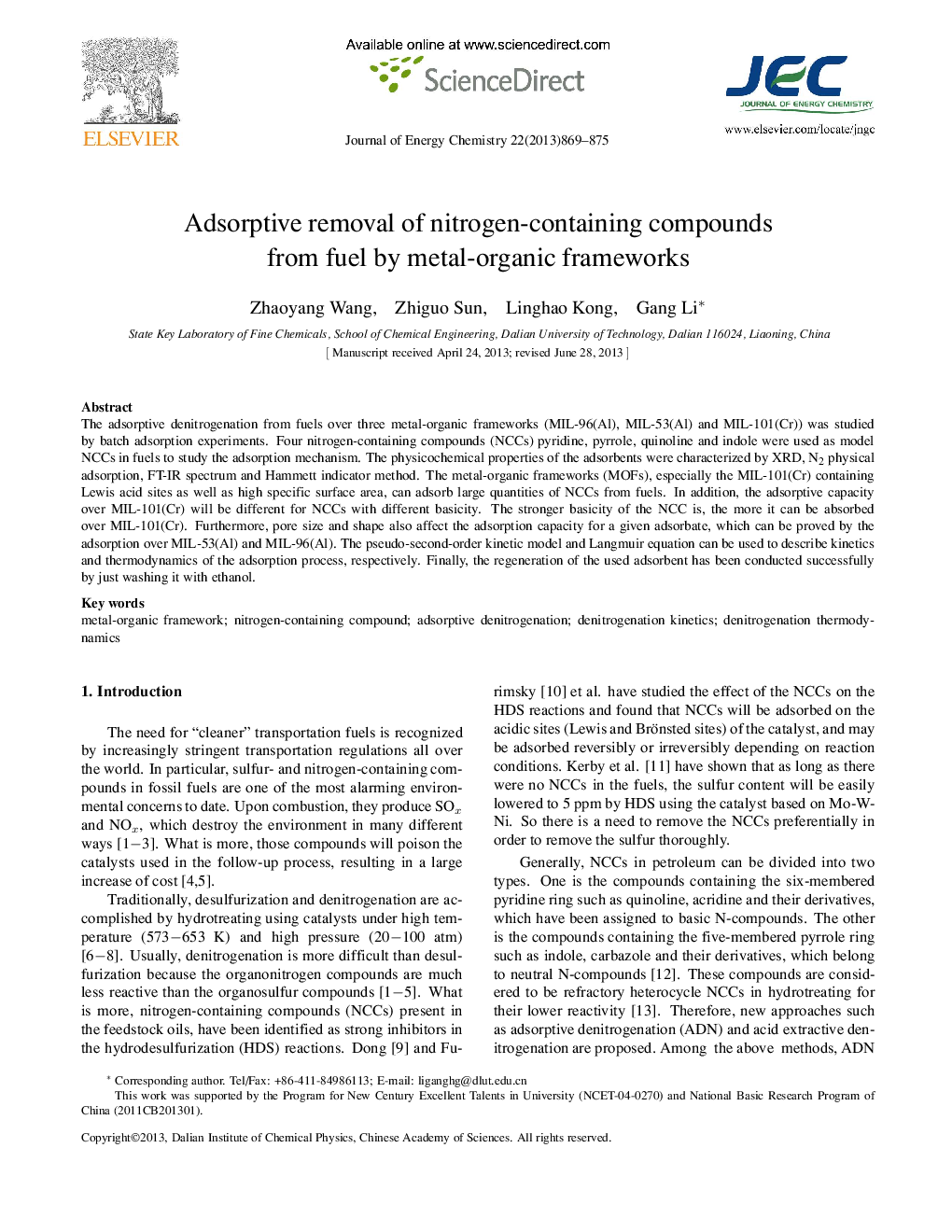| کد مقاله | کد نشریه | سال انتشار | مقاله انگلیسی | نسخه تمام متن |
|---|---|---|---|---|
| 63961 | 48262 | 2013 | 7 صفحه PDF | دانلود رایگان |

The adsorptive denitrogenation from fuels over three metal-organic frameworks (MIL-96(Al), MIL-53(Al) and MIL-101(Cr)) was studied by batch adsorption experiments. Four nitrogen-containing compounds (NCCs) pyridine, pyrrole, quinoline and indole were used as model NCCs in fuels to study the adsorption mechanism. The physicochemical properties of the adsorbents were characterized by XRD, N2 physical adsorption, FT-IR spectrum and Hammett indicator method. The metal-organic frameworks (MOFs), especially the MIL-101(Cr) containing Lewis acid sites as well as high specific surface area, can adsorb large quantities of NCCs from fuels. In addition, the adsorptive capacity over MIL-101(Cr) will be different for NCCs with different basicity. The stronger basicity of the NCC is, the more it can be absorbed over MIL-101(Cr). Furthermore, pore size and shape also affect the adsorption capacity for a given adsorbate, which can be proved by the adsorption over MIL-53(Al) and MIL-96(Al). The pseudo-second-order kinetic model and Langmuir equation can be used to describe kinetics and thermodynamics of the adsorption process, respectively. Finally, the regeneration of the used adsorbent has been conducted successfully by just washing it with ethanol.
Graphical AbstractThree metal-organic frameworks (MIL-101(Cr), MIL-53(Al) and MIL-96(Al)) were used as adsorbents to remove the N-containing compounds in liquid fuel. Due to the existence of Lewis acid sites and high specific surface area, MIL-101(Cr) presents the best adsorptive denitrogenation performance.Figure optionsDownload as PowerPoint slide
Journal: Journal of Energy Chemistry - Volume 22, Issue 6, November 2013, Pages 869–875